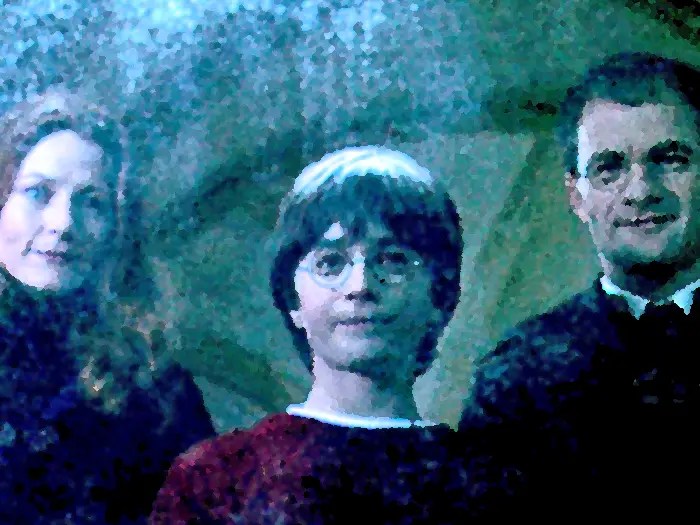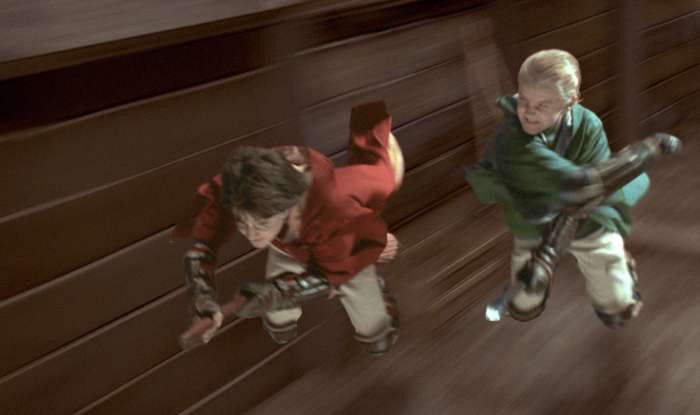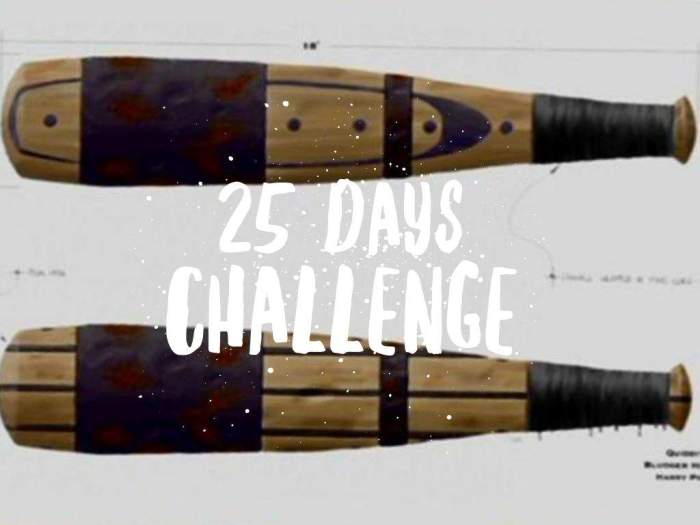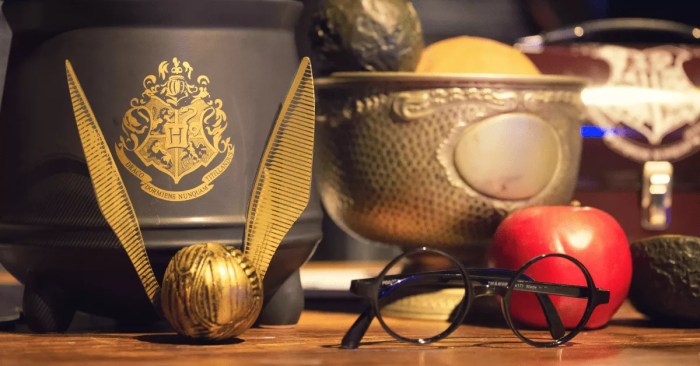Welcome to the enchanting world of Quidditch, where the Harry Potter Quidditch Position Quiz awaits to unveil your true calling on the pitch. Embark on a magical journey to determine whether you possess the lightning-fast reflexes of a Seeker, the strategic brilliance of a Chaser, the unwavering determination of a Keeper, or the thunderous force of a Beater.
As you navigate this quiz, you’ll delve into the intricacies of each Quidditch position, uncovering the physical and mental attributes required to excel in this thrilling sport. From the adrenaline-pumping pursuit of the Golden Snitch to the strategic maneuvering of the Quaffle, every position demands a unique set of skills and a burning passion for the game.
Quidditch Position Basics

Quidditch is a fast-paced, exciting sport played on broomsticks. There are seven players on each team, each with a specific role to play. The four main positions are Chaser, Seeker, Beater, and Keeper.
Chasers are the most numerous position on the team, with three players. Their job is to score goals by throwing the Quaffle through the opposing team’s hoops. Some famous Chasers include Angelina Johnson, Katie Bell, and Alicia Spinnet.
Seekers
The Seeker is responsible for catching the Golden Snitch, a small, winged ball worth 150 points. The team that catches the Snitch wins the game. Some famous Seekers include Harry Potter, Viktor Krum, and Cho Chang.
Beaters
Beaters are responsible for protecting their team’s Chasers from Bludgers, heavy balls that can knock players off their brooms. They use Bludger Bats to hit the Bludgers away from their teammates. Some famous Beaters include Fred and George Weasley, and Ludo Bagman.
Keepers
The Keeper is responsible for guarding their team’s hoops and preventing the opposing team from scoring. Some famous Keepers include Oliver Wood and Ron Weasley.
Physical and Mental Attributes for Each Position

Quidditch positions demand specific physical and mental attributes to excel. Each position requires a unique combination of skills, agility, and cognitive abilities. Training methods and drills are tailored to develop these attributes, enhancing performance on the pitch.
Seeker
- Physical Attributes:
- Exceptional speed and agility
- Sharp eyesight and reflexes
- Aerial maneuverability
- Mental Attributes:
- Focus and concentration
- Spatial awareness and anticipation
- Strategic thinking
- Training Methods:
- Sprint drills and obstacle courses
- Target practice with Snitch simulators
- Aerial acrobatics and flight simulations
Chaser
- Physical Attributes:
- Strong and athletic
- Good hand-eye coordination
- Stamina and endurance
- Mental Attributes:
- Teamwork and cooperation
- Tactical awareness and decision-making
- Quick reflexes and anticipation
- Training Methods:
- Scrimmages and match simulations
- Passing drills and target practice
- Conditioning exercises and agility drills
Keeper
- Physical Attributes:
- Tall and agile
- Strong reflexes and quick reactions
- Excellent hand-eye coordination
- Mental Attributes:
- Concentration and focus
- Anticipation and strategic thinking
- Communication and leadership
- Training Methods:
- Reflex drills and ball-catching exercises
- Simulation of game situations with Quaffles and Bludgers
- Conditioning exercises and agility training
Beater
- Physical Attributes:
- Strong and muscular
- Good aim and coordination
- Physical endurance
- Mental Attributes:
- Aggression and determination
- Strategic thinking and decision-making
- Teamwork and communication
- Training Methods:
- Strength and conditioning exercises
- Target practice and Bludger handling drills
- Scrimmages and match simulations
Quidditch Strategy and Tactics

Quidditch, the thrilling wizarding sport, involves a complex interplay of strategies and tactics that determine the outcome of matches. Teams must effectively utilize their players’ skills and positions to outmaneuver opponents and secure victory.
Positioning and Roles
Each player on a Quidditch team holds a specific position, contributing unique abilities and responsibilities to the team’s overall strategy:
- Chasers:Responsible for scoring goals by throwing the Quaffle through the opposing team’s hoops.
- Keepers:Protect their team’s hoops from opposing Chasers and Bludgers.
- Beaters:Use Bludgers to disrupt opposing players and protect their teammates.
- Seekers:Solely focused on catching the Golden Snitch, worth 150 points and ending the match.
Strategies
Teams employ various strategies to gain an advantage, including:
- Man-to-Man Defense:Each player guards a specific opposing player.
- Zone Defense:Players cover specific areas of the pitch rather than individual opponents.
- Blitzing:A Beaters or Chaser charges at the opposing Keeper to create a scoring opportunity.
- Feinting:Players pretend to make a move to deceive opponents.
Tactics
Specific tactics are used to execute strategies, such as:
- Triangle Formation:Chasers arrange themselves in a triangle to pass the Quaffle quickly and effectively.
- Covering the Goal:Beaters and Chasers position themselves to block Bludgers from reaching the Keeper.
- Bludger Blocking:Beaters use their Bludgers to intercept or deflect incoming Bludgers.
- Feint and Dodge:Seekers use feints and quick maneuvers to avoid capture by opposing Beaters.
Conclusion
Effective Quidditch strategy and tactics require teamwork, skill, and adaptability. By understanding the roles, strategies, and tactics involved, teams can maximize their chances of success and achieve victory on the pitch.
Historical Evolution of Quidditch Positions

The evolution of Quidditch positions has been shaped by changes in rules and equipment over the centuries. In the early days of the game, there were only three positions: Chaser, Keeper, and Seeker. As the game became more popular, new positions were created to meet the demands of the increasingly complex sport.
One of the most significant changes in the history of Quidditch was the introduction of the Snitch in the 13th century. This golden ball, which is worth 150 points, is pursued by the Seeker. The addition of the Snitch created a new dimension to the game, and it quickly became one of the most important positions.
Another major change in the history of Quidditch was the introduction of the broomstick in the 16th century. This invention allowed players to fly, which opened up a whole new range of possibilities for the game. The broomstick also made it possible for new positions to be created, such as the Beater and the Keeper.
Equipment Evolution
The evolution of Quidditch equipment has also had a major impact on the roles and responsibilities of each position. In the early days of the game, players used simple broomsticks made of wood or bamboo. These broomsticks were not very maneuverable, and they made it difficult for players to fly at high speeds.
In the 19th century, the invention of the Firebolt broomstick revolutionized Quidditch. This broomstick was much faster and more maneuverable than previous broomsticks, and it allowed players to fly at speeds of up to 150 miles per hour. The Firebolt also made it possible for players to perform more complex maneuvers, such as the Wronski Feint and the Immelmann Turn.
The introduction of new equipment has also led to the creation of new positions. For example, the introduction of the Bludger in the 17th century led to the creation of the Beater position. The Beater’s job is to protect their team’s players from the Bludgers, which are heavy balls that can cause serious injury.
Rule Changes, Harry potter quidditch position quiz
Changes in the rules of Quidditch have also had a major impact on the roles and responsibilities of each position. In the early days of the game, there were very few rules, and players were allowed to use almost any means necessary to win.
This led to a lot of violence and chaos, and it made the game very dangerous.
In the 18th century, the International Quidditch Association (IQA) was founded. The IQA established a set of rules for the game, which helped to reduce violence and chaos. The IQA also introduced new rules, such as the offside rule and the foul rule.
These rules helped to make the game more fair and more enjoyable.
The evolution of Quidditch positions has been a long and complex process. The changes in rules and equipment have had a major impact on the roles and responsibilities of each position. Today, Quidditch is a fast-paced, exciting sport that is enjoyed by millions of people around the world.
Quidditch Positions in Popular Culture

Quidditch positions have captured the imagination of fans worldwide, becoming iconic symbols in popular culture. Their portrayal in books, movies, and other media has shaped our understanding of the game and its characters.
In J.K. Rowling’s Harry Potter series, each position embodies unique traits and abilities. The Seeker, represented by Harry Potter, is the agile and courageous player responsible for catching the elusive Golden Snitch. The Chasers, such as Angelina Johnson and Alicia Spinnet, control the Quaffle and score goals through the hoops.
The Beaters, including Fred and George Weasley, use Bludgers to defend their team and disrupt opponents.
The Keeper, like Oliver Wood, protects the goalposts from the opposing team’s Quaffles. Each position demands specific skills and attributes, making them integral to the game’s strategy and excitement.
Movies and Other Media
The Harry Potter film adaptations have brought the Quidditch positions to life on the big screen. The action-packed Quidditch matches showcase the athleticism and determination of the players. The films have also popularized the positions through merchandise, such as replica broomsticks and Quidditch jerseys.
Beyond the Harry Potter universe, Quidditch has inspired spin-off games and real-world adaptations. The Quidditch Premier League, established in 2010, organizes competitive matches played on foot with modified rules.
The cultural significance of Quidditch positions lies in their representation of teamwork, sportsmanship, and the pursuit of victory. They have become symbols of adventure, friendship, and the power of imagination.
Questions Often Asked: Harry Potter Quidditch Position Quiz
What is the most challenging position in Quidditch?
The Seeker, as it requires exceptional speed, agility, and an intuitive sense for finding the Golden Snitch.
Which position is responsible for scoring goals?
The Chaser, who must navigate through the opposing team’s defenses and shoot the Quaffle through the hoops.
What is the role of the Keeper in Quidditch?
To protect the team’s hoops from the opposing team’s Chasers and prevent them from scoring.